Research portraits
Here you can get to know our researchers in a more personal way. What sparked their interest in natural hazards and disaster science? What do their like to do when there are not working on research? And their best golden tips for early-career researchers!
RESEARCH PORTRAIT: GIULIANO DI BALDASSARRE
CNDS Director and Professor of Hydrology at Uppsala University.
- What is your area of expertise?
My research deals with risks (and opportunities) generated by human-nature interactions, with a focus on water-related issues including floods and droughts
- What sparked your interest in Natural Hazards and Disaster Science?
Extreme events have always captured my attention, but what sparked my interest in studying disasters was the experience of a major earthquake in L’Aquila (Italy) that killed more than 300 people on April 6th, 2009.
- If you could only work on one problem in Natural Hazards and Disaster Science it would be...
Exploring the benefits of tackling the root causes of disaster losses, such as social inequalities, because too much emphasis is still given to structural measures that only treat their symptoms.
- What book or paper has been most influential to your career and why?
“Thinking, fast and slow” by Daniel Kahneman. This book made me fascinated by cognitive sciences and motivated my research in the way in which humans make decisions –an essential aspect in the study of natural hazards and disasters.
- What do you like to do when you’re not working on research?
Art and sport. I make short films (not many right now) and act for a theater group based in Stockholm. I also enjoy obstacle course racing (OCR), a great team-building activity.
- What is your golden tip for current early career scientists?
Avoid a tunnel vision. To advance science, we need to go deep on one specific topic, but we should try to keep a big picture if we aim to develop policy-relevant science. Listening, exchanging ideas or collaborating with fellows from other disciplines is key.
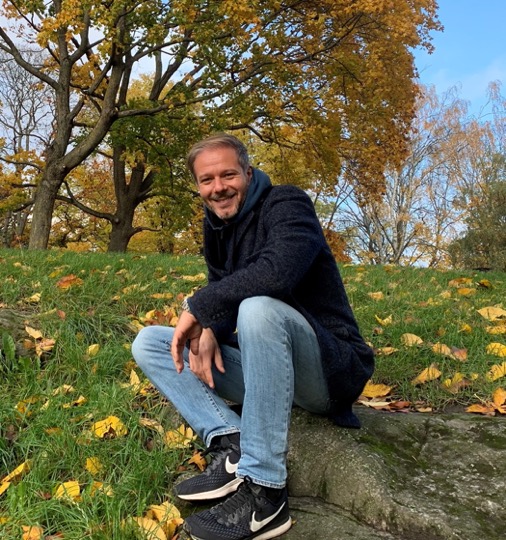
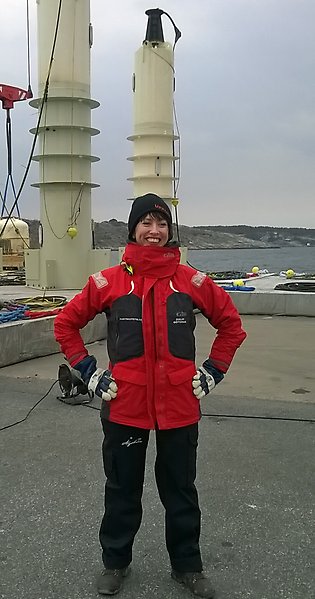
RESEARCH PORTRAIT: MALIN GÖTEMAN
CNDS Deputy Director and Associate Professor at Department of Electrical Engineering, Uppsala University
- What is your area of expertise?
Resilience of offshore renewable energy systems to extreme wave events, with a focus on wave energy systems. Also related topics, such as performance optimization of large wave energy systems, and resilience of the electrical grid to disruptive events.
- What sparked your interest in natural hazards and disaster science?
I am interested in renewable energy systems as these are required for a sustainable society with no negative impact on climate and environment. Wave energy has a lot of potential that has not yet been utilized. The largest challenge for wave energy systems is offshore survivability, which sparked my interest in extreme wave events and disaster science.
- If you could only work on one problem/issue/challenge in natural hazards and disaster science it would be...
The same topic as now, because the need for renewable energy systems is ever increasing, and many offshore renewable energy systems (mostly wind energy farms) are currently being installed, at even deeper waters. As the energy infrastructure is critical to our society, reliability of those offshore renewable energy systems is of uttermost importance.
- What book or paper has been most influential to your career and why?
Difficult question! My academic career started in theoretical physics, I did my PhD in string theory. The book that motivated me to start studying physics and pursue an academic career was probably "Gekrümmter Raum und verbogene Zeit - Einsteins Vermächtnis" by Kip S. Thorne, a popular science book that I bought and read while living in Berlin and working with art.
- What do you like to do when you’re not working on research?
Hang out with family and friends! Going to the country side with my family, drink a tasty beer on a sunny afternoon, go to concerts, do handicrafts, watch good movies, play boardgames, occasionally doing sports :)
- What is your golden tip for early career scientists?
Create your own network, and use it. Be pro-active and ask senior researchers for advise and mentoring. Learn to say no and prioritize among your activities.
RESEARCH PORTRAIT: ANNA RUTGERSSON
CNDS Board Member and Professor in Meteorology at Department of Earth Sciences, Uppsala University
- What is your area of expertise?
My area of expertise is different aspects of air-sea interaction, how the upper water processes links to atmospheric processes. This is highly relevant for many aspects, ranging from the global carbon cycle, to the development of extreme atmospheric processes.
- What sparked your interest in natural hazards and disaster science?
It is a very close link between the physical processes of the atmosphere and ocean to societal impacts; which adds one dimension to the important aspects of understanding Earth Science processes.
- If you could only work on one problem/issue/challenge in natural hazards and disaster science...
It would be coastal extremes, because for me it is a challenge as we then need to understand the interaction between the atmosphere, ocean and land (which is a challenge); coastal extremes also have great impact on many people and important infrastructures.
- What book, paper or TV program has been most influential to your career and why?
I watched a scientific TV program when I as a teenager. It focused on the physics of the atmosphere and visualized the 3D aspects of atmosphere and clouds; This program triggered my interests for meteorology and a realization that atmosphere and weather is a really challenging and interesting area.
- What do you like to do when you’re not working on research?
I like spending time in nature and reading books.
- What is your golden tip for early career scientists?
Find the fun in the research you are doing; to have the energy to pursue a scientific career, one must really like science.
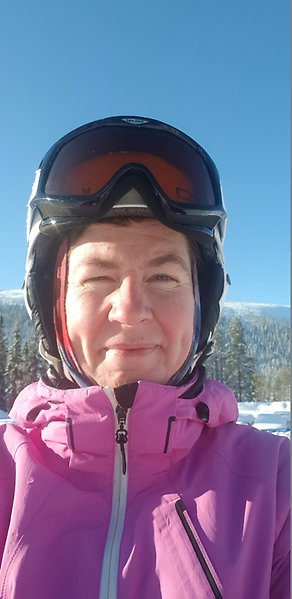
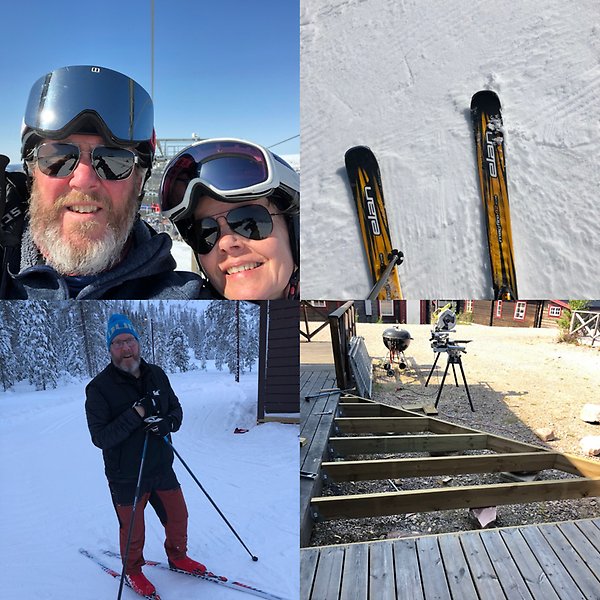
RESEARCH PORTRAIT: MIKAEL GRANBERG
CNDS Board Member, professor of political science and co-director of the Centre for Societal Risk Research at Karlstad University
- What is your area of expertise?
I am a professor in political science with quite broad research interests, encompassing welfare state trajectories, ideological shifts and their impact on policy problem perceptions (including perceptions of risk), and the global vs. the local (how global phenomena impacts localities) in term of examining how macro trends impact politics on national, regional and, particularly, local levels. I often use a neo-institutional perspective addressing issues of power and democracy and this entails a critical perspective on “policy problems” that includes viewing them as politically and socially constructed/interpreted. Over the last 15 years, the main part of my research has focused on if and how institutionalized political practices and norms facilitate or hinder collective action in the face of challenges and risks from climate change.
- What sparked your interest in natural hazards and disaster science?
I became interested in climate change, mitigation (reducing emissions), adaptation (adjusting to the impacts) and risk perception (the understanding and priorities connected to climate change hazards) in the early 2000s as I found the gap between the finding of science, politics and policy puzzling. This interest was reinforced during my postdoc in Australia where this gap was even more pronounced than in Europe and Sweden. So, I started wondering about what was driving political priorities and policies in ways that were not facilitating a transformation towards a more climate friendly society.
- If you could only work on one problem/issue/challenge in natural hazards and disaster science...
It would be climate politics as a contest over the framing of ideas central for society’s perception of climate change and related risks, because these frames have deep impact on the measures employed as they influence the selection, organization, interpretation and sense making of a complex reality in ways that guide knowing, analyzing, persuading and acting.
- What book or paper has been most influential to your career and why?
There are of course ample examples in the research literature that have influenced and inspired my thinking but I guess that if I had to choose one it would be Robert Dahl's “Who governs” that I read while doing my bachelor. The book, from 1961 (actually older than me), is about power, influence and governance in an American city and influenced my thinking quite a lot when I was writing my PhD dissertation. It inspired me in how to write an academic text that is accessible for a broader public but also triggered my more critical instincts and methodological concerns as I thought that there was much more to Dahl's case study than he was able to observe and analyze from his methodological standpoint.
- What do you like to do when you’re not working on research?
On my free time, I like to read and listen to music, even though the reading part is much smaller than I would like. During summer time, I like to have small construction projects (a deck, a shed, etc.) that enable me to work with my hands and also to actually see the fruit of my labor concretely. I like to cook (and sometimes drink wine while doing it) and in the winter time, I ski, downhill and cross country, and watch a lot of ice-hockey.
- What is your golden tip for early career scientists?
If I would start my research career all over again, I would probably be more relaxed and enjoy the privilege that it is to be a researcher and to do things I really like and that excites me. I think that it is important to let your curiosity drive you and explore things with joy. So, if I would give an advice to a PhD student or an early career scholar, it would be to work hard but never forget to have fun doing it.
RESEARCH PORTRAIT: STEFFI BURCHARDT
CNDS Management Group Member and Senior lecturer/Associate Professor at Department of Earth Sciences, Uppsala University
- What is your area of expertise?
I do research on how magma is moving inside volcanoes by studying solidified magma chambers in dead volcanoes. This helps to improve the interpretation of signals from active volcanoes before they have eruptions and hopefully leads to better disaster preparedness.
- What sparked your interest in Natural Hazards and Disaster Science?
I want my research to be relevant to people. I think if we understand the signals a volcano is showing before an eruption, we can help authorities to make better decisions, for example on whether to evacuate or not.
- If you could only work on one problem in Natural Hazards and Disaster Science...
It would be improving the communication between scientists and decision makers, because communication problems are the biggest obstacle to good decisions before, during and after crises.
- What book or paper has been most influential to your career and why?
As a PhD student there was no text book in my field. I had to piece together information from many different research articles. So, a few years ago, I wrote the textbook I had missed. Whether it will have much influence on my career is not so important, but the book is hopefully helping students today.
- What do you like to do when you’re not working on research?
I spend time with my family or learn how to do a handstand.
- What is your golden tip for current early career scientists?
Don't underestimate the power of good communication. Being able to explain what you're working on and why this is important so that non-experts understand you is the key to getting research funding, recognition for your work, jobs and the impact your work deserves.

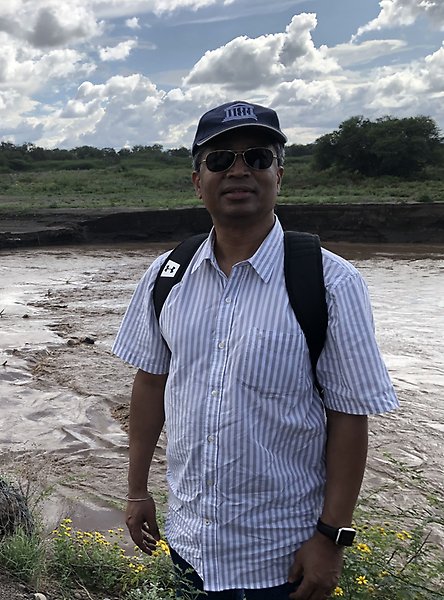
RESEARCH PORTRAIT: ASHOK SWAIN
CNDS Management Group Member and Professor at the Department of Peace and Conflict Research, Uppsala University
- What is your area of expertise?
Water Security, Environmental Migration, Climate Change and Conflicts
- What sparked your interest in natural hazards and disaster science?
I grew up in India's most natural disaster-prone region, which regularly suffers from high floods and cyclonic storms. That childhood memories and post-doctoral research in Sweden on water conflict and environmental migration made me interested in researching natural hazards.
- If you could only work on one problem/issue/challenge in natural hazards and disaster science...
It would be the role of political leadership in managing natural hazards, because I think it is least researched though political leadership plays a key role in how the country and society respond during a natural disaster.
- What book or paper has been most influential to your career and why?
My paper “Displacing the Conflict: Environmental Destruction in Bangladesh an Ethnic Conflict in India”, Vol. 33, no. 2, 1996, pp. 189-204. This paper was the finding of my post-doctoral research, which had found how environmental migration can cause conflict and violence in faraway areas. This research helped me to establish myself as a researcher in the field of environmental migration and conflicts.
- What do you like to do when you’re not working on research?
Cooking and traveling.
- What is your golden tip for early career scientists?
Don’t follow others; find a research topic of your interest and choosing.
RESEARCH PORTRAIT: CHARLES PARKER
CNDS Board Deputy Chair and Associate Professor at the Department of Government, Uppsala University.
- What is your area of expertise?
I am interested in the politics and management of existential risk and efforts to prevent avoidable catastrophe. This interest has manifested itself in my work studying the global efforts to address climate change, what drives efforts to reduce disaster risk, the efficacy of the international institutions created to stop the spread of nuclear, biological, and chemical weapons, and the effectiveness of the EU’s civil protection arrangements. I am also fascinated with investigating the origins and consequences of the warning-response problem and post-crisis learning and accountability procedures. This work has resulted in publications on the September 11th, 2001 terrorist attacks, the 2005 Hurricane Katrina disaster, and the 2010 and 2011 Icelandic Volcanic Ash Cloud Events.
- What sparked your interest in Natural Hazards and Disaster Science?
I was born and raised in the San Francisco Bay Area, and in California, natural hazards, such as earthquakes, fires, floods, tsunamis, and landslides, are a clear and present danger. Having lived through multiple earthquakes—including the 1989 Loma Prieta earthquake—droughts, and massive fires, I have seen firsthand the life-altering impact of these events. These experiences vividly illustrated to me that environmental protection, good governance, and disaster management are matters of life and death.
- If you could only work on one problem in Natural Hazards and Disaster Science...
It would be efforts to address the threat of climate change, because our future and quality of life depend on how we respond to what I regard as humanity’s foremost warning response challenge. We face a moment of peril and opportunity, and the stakes are high that we get it right.
- What book or paper has been most influential to your career and why?
Oran Young’s 1991 path-breaking International Organization article, “Political Leadership and Regime Formation: On the Development of Institutions in International Society.” Young’s work provided a clear analytical framework for studying leadership in action and was an inspiration and point of departure for the work I have carried out studying the role leadership played in the outcomes of the United Nations climate change negotiations from 2008-2015 that ultimately resulted in the adoption of the Paris Agreement.
- What do you like to do when you’re not working on research?
Spend time with my wonderful family. A trip to a beautiful place is always a joy. Take a swim. I’ve had some of my best ideas in the pool. Losing myself in a work of great fiction. The two books on my nightstand at the moment are Lincoln in the Bardo by George Saunders and The Ministry for the Future by Kim Stanley Robinson.
- What is your golden tip for current early career scientists?
Find a research topic that fascinates you and a research puzzle that intrigues you. Say yes to opportunities to collaborate. And, of course, publish, publish, publish!
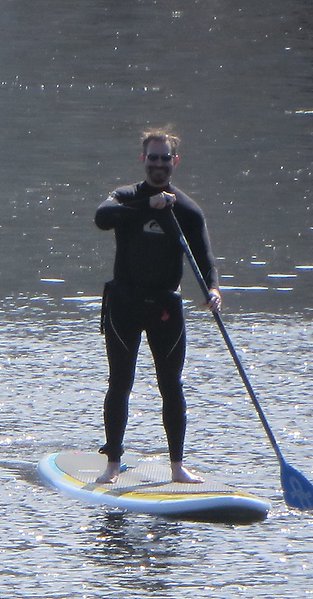
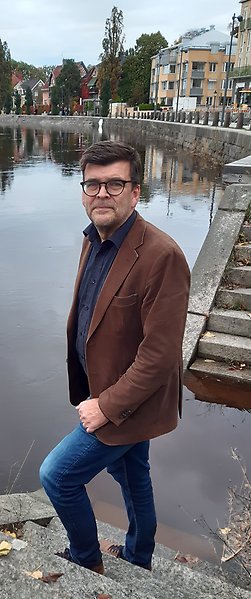
RESEARCH PORTRAIT: LARS NYBERG
CNDS Management Group Member and Professor in Risk and Environmental Studies at Karlstad University
- What is your area of expertise?
Disaster risk management, often with a focus of hydro-meteorological risks.
- What sparked your interest in Natural Hazards and Disaster Science?
My background in hydrology and an employment at the Swedish Rescue Services Agency some 10-15 years ago gave opportunities to develop my knowledge and understanding of disaster risks, and to build a network in Sweden and internationally.
- If you could only work on one problem in Natural Hazards and Disaster Science...
It would be developing my research efforts in Asia, especially Bangladesh, because their climate challenges are huge and we can learn a lot from the good examples of prevention and preparedness that you can find there.
- What do you like to do when you’re not working on research?
I like to spend time at our country house, and take a kayak tour in the nearby lake.
- What is your golden tip for current early career scientists?
Spend some time to establish and expand your network, both within academia and in society. It will help you to be established as a senior researcher, to compete for funding, and to develop your knowledge and skills.
RESEARCH PORTRAIT: KLAS HJORT
CNDS Management Group Member and Head of the Microsystem Technology Program, Department of Materials Science and Engineering at Uppsala University
- What is your area of expertise?
I am Professor in Materials Science with specialisation in micromechanics.
- What sparked your interest in Natural Hazards and Disaster Science?
The potential of miniaturized systems for increasing the lateral and temporal resolution of measurements, either for models or when handling an acute crisis.
- If you could only work on one problem in Natural Hazards and Disaster Science...
It would be how to use microfluidic analyses to give rapid answers in the field, because then an understanding can be reached directly and not after an answer comes from a central laboratory.
- What book or paper has been most influential to your career and why?
S. Adachi, GaAs, AlAs, and AlxGa1−xAs: Material parameters for use in research and device applications, Journal of Applied Physics 58, R1 (1985). It much inspired my Thesis ‘Gallium Arsenide Micromechanics’ (1993).
- What do you like to do when you’re not working on research?
Meet people, eat and drink, and tell stories.
- What is your golden tip for current early career scientists?
It is good to be best in something and the easiest way is to be the first.
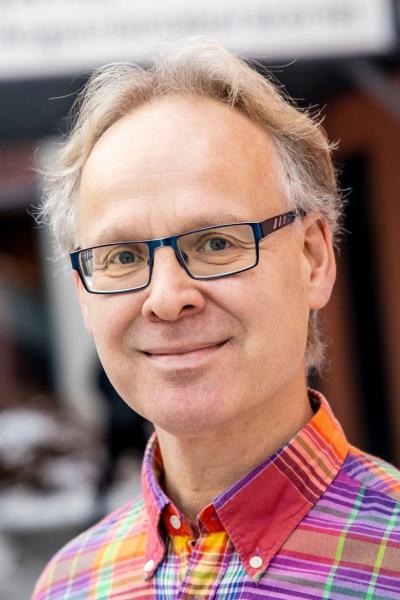
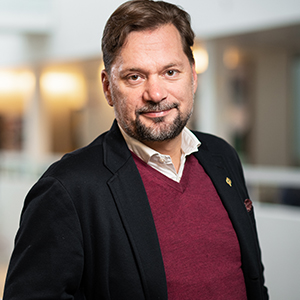
RESEARCH PORTRAIT: FREDRIK BYNANDER
Associate Professor and the Director of the Centre for Societal Security, Swedish Defence University.
- What is your area of expertise?
I’m a political scientist specialized in crisis management studies with long experience in outreach and practical implications work.
- What sparked your interest in Natural Hazards and Disaster Science?
For a crisis management scholar, disaster science is an area that triggers acute questions regarding societal readiness to hazards that are often predictable (in the long run), but that are undermitigated and undermanaged, especially its social roots and consequences. This allows research that can “control for” a number of variables that are problematic in e.g. terrorism studies, economic crises and other problems that stems from human interaction only.
- If I could only work on one problem in Natural Hazards and Disaster Science...
It would be identifying generic capabilities and tools for disaster risk reduction.
- What book or paper has been most influential to your career and why?
I always seem to end up thinking about the mechanisms described by Charles Perrow in his Normal Accidents. How we organize safety and security matters and better technology, additional resources or better trained people doesn’t always help.
- What do you like to do when you’re not working on research?
My interests are quite mundane: playing tennis and golf with my family and others, reading a good book and cracking open a beer in the sauna. Cooking and driving are my other decompression methods.
- What is your golden tip for current early career scientists?
Try more things than one. If it feels like you’re falling behind your peers in the publication race, remind yourself that this is a marathon, not a sprint, and that there are finish lines in different places depending on which direction you want to take. Try to do things that matter beyond the niche you might find yourself in – that makes it easier one day to explain to your kids what it is that you do and why.
